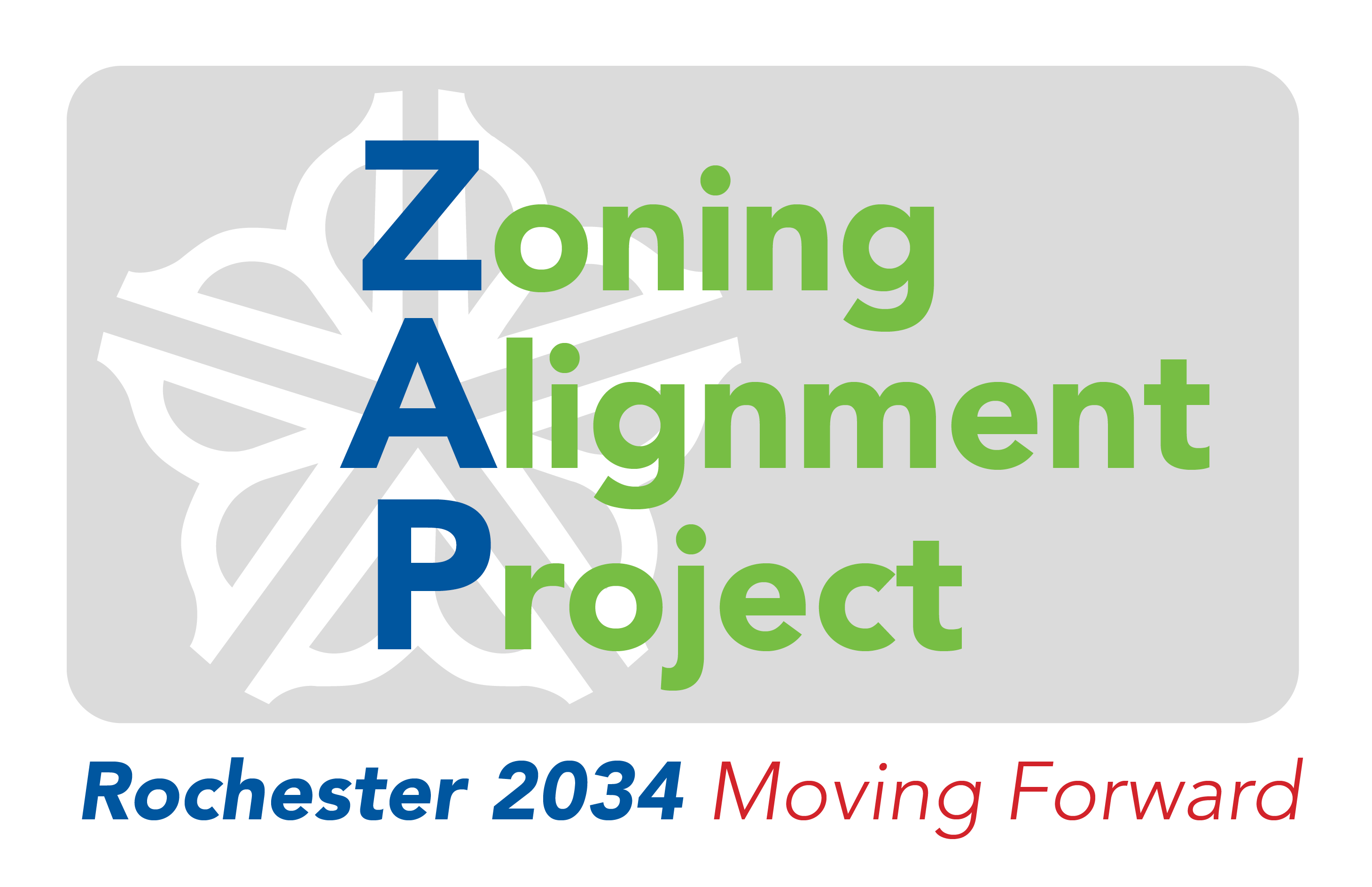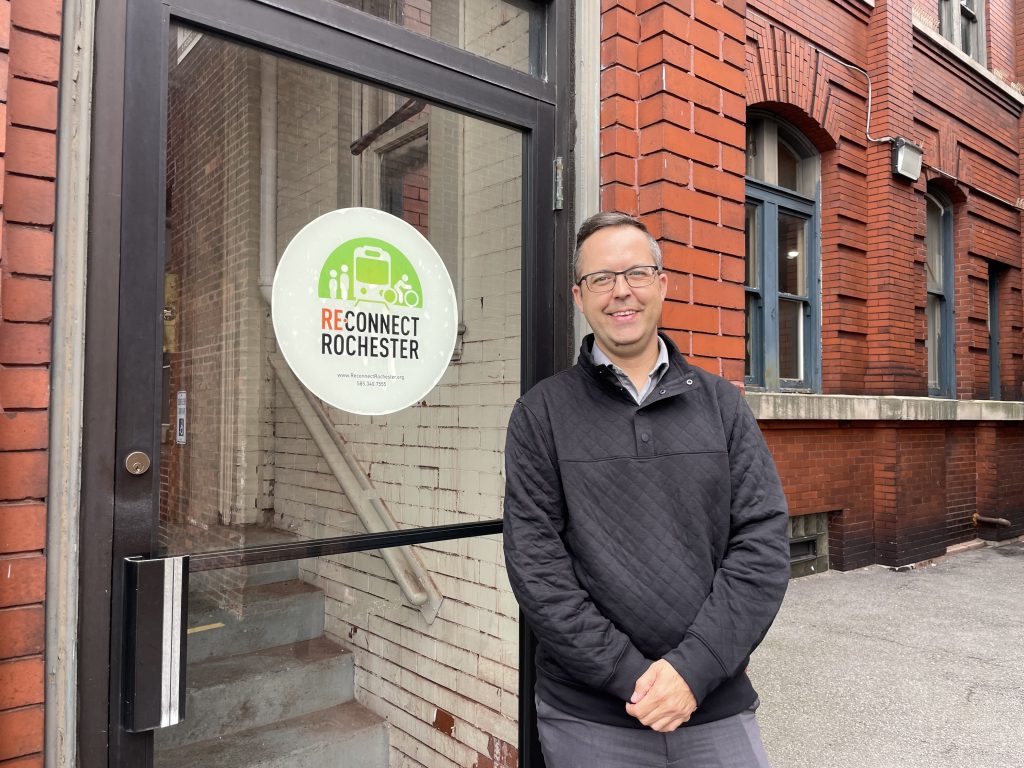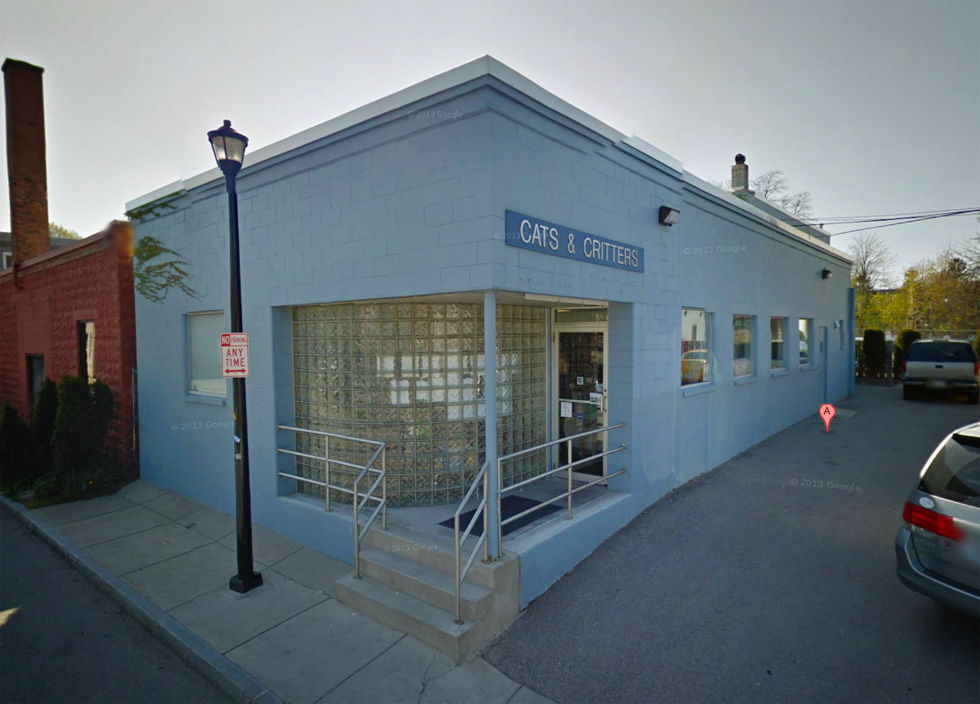By Cody Donahue, Director of Advocacy and Policy
The Rochester ZAP Draft came out September 20th with an aim to update the City of Rochester’s zoning code to align with the Rochester 2034 comprehensive plan and provide a blueprint for growth over the next 15 years. A new zoning code should enable the comprehensive plan’s goal of investing in quality infrastructure for walking, biking, rolling and public transportation. While others are providing valuable analysis about housing, Reconnect Rochester has taken a deep look at the proposed plan’s impact on multimodal transportation and the ways this plan can lead Rochester to a less car-dependent future.
Rochester needs to hear your voices to make sure the new Zoning code will lead to better community mobility. Join one of the upcoming hearings or submit your comments online by January 31st. Two public hearings before the Rochester Environmental Commission will be held on the following dates. Verbal comments will be accepted at these hearings:
- 6:30 p.m., Tuesday, Dec. 5, 2023, at City Council Chambers at City Hall, 30 Church St.
- 6:30 p.m., Wednesday, Jan. 17, 2024, in City Council Chambers at City Hall, 30 Church St.
Need some help with identifying the things that will support better mobility? Feel free to use Reconnect Rochester’s ZAP Talking Points.
In the meantime, here are three things we want you to know about zoning’s impact on transportation.
1. Zoning enables smarter growth, and smarter growth means denser, human scale neighborhoods. Higher density is good for walkability, wheelchair accessibility, bikeability and public transportation coverage.
What does zoning even have to do with transportation? A lot actually. We believe a new zoning code should encourage smarter land use that puts Rochester on a path towards less car-dependence. Human scale neighborhoods are more equitable to all residents, placing everyday amenities like groceries, pharmacies, daycares, doctor’s offices, cafes and restaurants within walking distance of where people live. Far too often, our City’s amenities are disappearing in favor of sprawled development in neighboring towns. For the 24% of Rochester City households that do not have access to a car (City of Rochester Active Transportation Plan, pg. 4), it becomes a lot harder to meet basic needs. Denser, human scale neighborhoods enable people to choose to take fewer single-occupancy car trips in favor of walking or public transit.
So what should change in the draft ZAP to make Rochester a denser, more human scale city?
- While some upzoning has occurred in the draft plan, the City should review intersections that are well-served by public transportation and maximally upzone a larger area around the intersection. This allows more amenities to be concentrated near where people take the bus.
- Consider allowing by special permit additional density in residential zones. For example, in Low-Density Residential (LDR), allow Accessory Dwelling Units (ADUs) and duplexes and in Medium-Density Residential (MDR), allow dwelling units in mixed-use buildings.
- Place a moratorium on new gas stations, drive-thrus and carwashes. We recommend the City of Rochester join other cities such as Santa Rosa and Petaluma, CA to place a moratorium on new gas stations, not only due to their long-term harmful impacts on the environment and residents’ health, but also to encourage the transition to electric vehicles. In addition, new drive-through restaurants and banks and carwashes place priority on vehicle drivers passing through neighborhoods, and the frequent in-and-out traffic increases danger for pedestrians and cyclists.
2. Zoning rules that require car parking minimums perpetuate an unnecessary amount of parking spaces
Rochester has taken away parking minimums for car storage in commercial zones in the draft plan (yay!), but retained it in residential areas (boo!). We believe that Rochester should join the 46 other North American Cities that have eliminated parking mandates altogether, including Buffalo and Canandaigua. Findings from Buffalo and other cities following the elimination of parking minimums show that parking was overprovisioned even in residential areas. As a result of eliminating parking minimums, within 4 years Buffalo built 1,000 new homes that wouldn’t have otherwise existed. The City of Austin just became the largest city in America to remove parking minimums too. Why would Rochester keep them when everyone else seems to be jettisoning them?
If we’re going to see a less car-dependent future in Rochester, we need to stop making the number of parking spaces a key factor in building plans. Big shopping days don’t even fill up parking lots anymore. While Downtown and other commercial zones no longer have parking minimums under the new plan, any building with an occupancy posting of 75 people or more will be required to develop a Transportation Access Plan. That seems like a very low threshold. Also, the way the TAP requirements are written create a competing dual mandate to both “encourage alternative modes of transportation” while “not straining public infrastructure”. This requirement seems unworkable on a mass scale, especially in Downtown and should be removed. Yes, transportation demand management has the potential to do good, but in practice we’re concerned the zoning rule will lead to dozens if not hundreds of isolated TAP plans that don’t manage anything. We’re suggesting the ZAP remove this TAP requirement altogether. If they do keep it, remove the clause in article 15.2 about avoiding undue burden on public infrastructure. If anything, we need developers to show how they’re investing in public infrastructure. It seems to us that requiring developers to explain how their plans help the City meet the City’s Comprehensive Access and Mobility Plan developed in 2019 would be a better idea.
3. Bicycle parking is part of zoning too!
Yes, you heard it here. Zoning plans require indoor, secure bicycle parking. Rejoice! But there are some catches. For instance, the City isn’t requiring itself to build bicycle parking in Open Space Districts (think parks, Parcel 5), where recreational bicyclists and festival goers tend to want bicycle parking. In addition, folks who work in industrial and regional commercial zone buildings won’t necessarily have to be provided indoor, secure bicycle parking. We don’t agree with these exemptions and think Rochester can better meet its climate goals by continuing to install bike parking at all its open spaces.
Rochester’s new zoning code has made some positive strides, but there’s more we can do to promote a city that is walkable, rideable and rollable. The draft Environmental Impact Statement recognizes (on page 7) that 81% of Millennials and 77% of Baby Boomers prefer to live in walkable, active communities that don’t require access to an automobile, and further indicates that by 2030, 25% of people in the housing market will be seeking housing in transit-supportive neighborhoods.
Rochester needs to hear your voices to get these changes reflected in the Zoning code. Join one of the upcoming hearings or submit your comments online.
Need some help with identifying the things that will support better mobility? Feel free to use Reconnect Rochester’s ZAP Talking Points.





